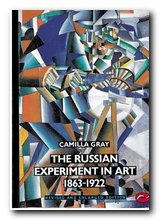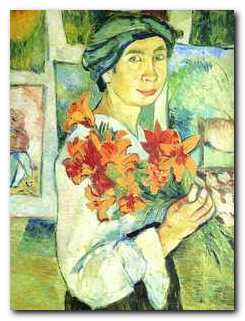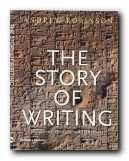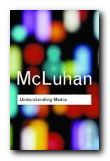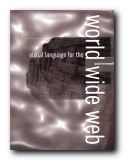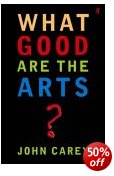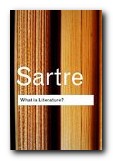the printed word from antiquity to the present
I’m amazed this book isn’t better known – though I’ve only just discovered it myself. The History and Power of Writing is a majestic, scholarly, and multi-disciplined study of the history of writing. Henri-Jean Martin traces the development of writing from Mesopotamia in 5,000 BC to digital technology of the last two decades. The history is recounted in astonishing detail, and the pace is quite slow. You will have to be a patient reader. He traces how writing styles changed according to the implements used; how the writing surface was made from papyrus, parchment, and paper; and how ‘books’ were assembled in the form of the scroll, the volumen, and then the codex.
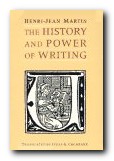 All these apparently simple technological changes produced immense social effects – all of which he examines in impressive detail. He also reveals the relationship between speech, reading, and writing, which until fairly recently was more complex than we might imagine. There were, for instance, three ways of reading a text for Latin scholars – silently (rare) as a form of sub-vocalised or murmured speech (common), and reading out loud (most common).
All these apparently simple technological changes produced immense social effects – all of which he examines in impressive detail. He also reveals the relationship between speech, reading, and writing, which until fairly recently was more complex than we might imagine. There were, for instance, three ways of reading a text for Latin scholars – silently (rare) as a form of sub-vocalised or murmured speech (common), and reading out loud (most common).
His study takes in wide-ranging aspects of classical antiquity – politics, commerce, jurisprudence, scholarship, literature, plus anything else which has left traces of its history in the form of writing, such as taxation and legal contracts.
There are all sorts of unforeseen spin-offs and intellectual byways – ecclesiastical practises, medieval poetry recitations, the development of the postal service, tax systems, plus the history of the Bible and the development of Christianity.
One of his key arguments is that all sorts of other developments led up to the invention of printing: the creation of the ‘new’ universities in the thirteenth and fourteenth centuries; the development of new paper-making techniques; plus copperplate engraving. And the volume of closely referenced evidence he brings to bear to support his arguments is so overwhelming, it would be a brave scholar who challenged any of his claims.
Even taking the translation into account, he takes no prisoners so far as his intellectual pitch is concerned:
Like cuneiform characters, hieroglyphs can have the value of ideograms, phonograms, or determinatives. The sign for the sun-god provides a simple example. Since the ideogram (the solar disc) might cause confusion because it also meant ‘day’ and was thus a polyphone, two phonograms were added to it, a human mouth for r and a forearm in profile for the aspirated laryngeal consonant ayin, thus providing the consonantal skeleton of the name (a third and final consonant was left out).
Nevertheless, this certainly ranks alongside Walter Ong’s Orality and Literacy and Jay David Bolter’s Writing Space as a seminal text on the nature of writing. If there’s a single weakness, its the shortage of illustrations.
As soon as the printed book becomes the most popular vehicle for writing to circulate, the subject expands to include typography, page design, book structure, and even the ideology of font sets,
This in its turn leads on to printing, publishing, and the book trade in general, plus a consideration of reading habits, of pirating works, and of censorship.
There’s a whole chapter devoted the contents of Renaissance libraries, which books people actually read, the establishment of private libraries throughout Europe, and even speculations about the manner in which people did their reading:
Petrarch devoutly kissed his copy of Virgil before opening it; Erasmus did the same for his Cicero; and in the evening, when he had finished his day’s work, Machiavelli put on his best clothes to read his favourite authors.
In the ‘modern’ period (1500—1800) the forms and functions of writing are firmly wrapped up in finance and trading, ecclesiastical history and public records.
You’ve got to be prepared for lots of political, social, and economic history – but this is what gives the book its depth, because this material provides the background and reasons for changes in writing, reading, and literacy in general.
There are also detours into related areas. His account of the nineteenth century for instance is largely concerned with the development of printing technology, the reproduction of illustrations and photographs, and most of all, the development of the press as a vehicle for independent criticism of the state.
When we reach the twentieth century this generalised approach to communication spreads out even wider to include telegraphy, stenography, audio recording, moving pictures, and eventually, in rapid succession, radio, television, and the computer. Although Martin looks in detail at the problems of information overload created by new media, he rather tantalisingly stops short of the explosion of the last fifteen years since the development of the Web.
This is a panoptic and encyclopedic study, any one of whose myriad side issues could fill a normal-sized book. It ought to be more widely known amongst scholars. If you don’t yet know it, a treasure trove of history and idea lies waiting for you.
© Roy Johnson 2000
Henri-Jean Martin, The History and Power of Writing, Chicago: University of Chicago Press, 1995, trns. Lynda G. Cochrane, pp.591, ISBN 0226508366
More on digital media
More on theory
More on typography
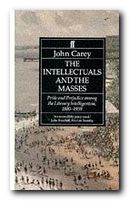
 His method in each chapter is to launch the topic theoretically (Knowledge, Writing Strategies) then discuss empirical and anecdotal evidence, and finally inspect the scientific research. Some of the results are of the uninspiring ‘47% did, 53% didn’t’ variety, but the result is commendably thorough. He draws on many types of writing for his examples, yet keeps coming back (for understandable reasons) to creative writing. Why then in the attempts to ‘measure’ or explain quality in writing didn’t the exceptions to his claims not occur to him? Yes – most writers need long and hard-earned experience, and practice and skill development. But how does one explain the Rimbauds, Chattertons, and Keats of this world who were producing masterpieces at an age when the rest of us were struggling with our ‘A’ levels?
His method in each chapter is to launch the topic theoretically (Knowledge, Writing Strategies) then discuss empirical and anecdotal evidence, and finally inspect the scientific research. Some of the results are of the uninspiring ‘47% did, 53% didn’t’ variety, but the result is commendably thorough. He draws on many types of writing for his examples, yet keeps coming back (for understandable reasons) to creative writing. Why then in the attempts to ‘measure’ or explain quality in writing didn’t the exceptions to his claims not occur to him? Yes – most writers need long and hard-earned experience, and practice and skill development. But how does one explain the Rimbauds, Chattertons, and Keats of this world who were producing masterpieces at an age when the rest of us were struggling with our ‘A’ levels?